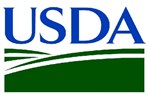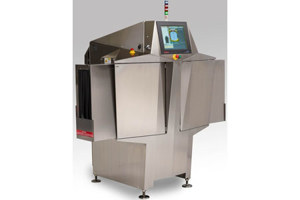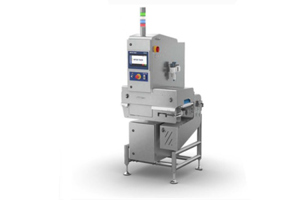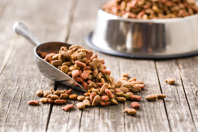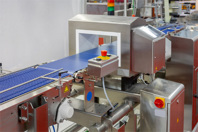Gain insight into the integration of AI and X-ray inspection software and how it supports the industry, focusing on two specific applications: cheese production and bakery bread product packaging.
- Ensuring High Quality And Contaminant-Free Pet Foods
- Best Practices To Avoid Metal Contamination In Candy Manufacturing
- X-Ray Inspection Vs. Metal Detection Technologies For Food Safety: What Should You Know?
- Are You Missing An Important Stage In Raw Material Product Inspection?
- How To Obtain Accurate Weight Measurement In Cheese Products
- Why The Sudden Rise In Metal Contaminants In Food Manufacturing
- The EU's Ban On TiO2 In Food May Impact Pharma. Here's What You Should Know.
FOOD MANUFACTURING GUEST CONTRIBUTORS
-
The EU's Ban On TiO2 In Food May Impact Pharma. Here's What You Should Know.
Titanium dioxide (TiO2) is used as a food additive and OSD pharmaceutical excipient. In 2020, the European Food Safety Authority noted data gaps regarding particle size, which can affect its toxicological properties, so the European Commission banned it as a food additive. Here's how this could impact pharma.
-
Implications Of The Upcoming USDA Strengthening Organic Enforcement Rule
The new Strengthening Organic Enforcement (SOE) Rule, which went into effect in March 2023, seeks to reduce fraud in the organic marketplace, improve the USDA’s enforcement protocols, and enhance oversight of organic producers, handlers, and certifiers. Though the rule will require action for many businesses and organizations, these changes will ultimately create a more unified, trusted, and transparent organic supply chain.
-
Addressing A Lack Of Transparency In Green Claims
The rise in consumer awareness and demand for greater transparency has led to changes in regulations worldwide. In response to greenwashing in the food sector, as well as other industries, regulatory authorities are stepping up efforts to hold organizations accountable for their green claims.
-
Smart Irrigation For Agriculture Leads To More Efficient Carbon Capture
Farmers are key to carbon capture, though many plans to reverse greenhouse gas emissions — such as the one described in Lawrence Livermore National Laboratory's 2020 report on California's efforts, Getting to Neutral — largely ignore them.
WHITE PAPERS
-
Principles Of Due Diligence For Food Safety And Quality Control8/23/2023
Explore the core principles of due diligence, legal requirements and standards for food safety, and ways to reduce the risk of product recalls.
Today’s dynamic manufacturing climate presents multiple challenges, forcing manufacturers to compare traditional and modern batch and rethink what to expect when choosing a system.
Product recalls can damage a company's reputation. Learn about the reasoning behind recalls, the impact of recalls, and what companies can do to minimize their exposure to such risks.
Explore how sludge production and energy consumption result in significantly high GHG emissions for aerobic treatment processes.
BioElectrochemical approaches, such as Aquacycl’s BioElectrochemical Treatment Technology (BETT™), can act as industrial pretreatment to make anaerobic digestion significantly more efficient and reliable.
APPLICATION NOTES & CASE STUDIES
-
Artificial Intelligence (AI) In Food Production10/8/2024
Gain insight into the integration of AI and X-ray inspection software and how it supports the industry, focusing on two specific applications: cheese production and bakery bread product packaging.
FOOD ONLINE CONTENT COLLECTIONS
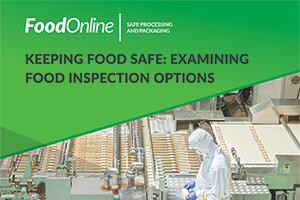
In this free collection of articles, you’ll find articles on four different types of inspection systems and how they work to keep food safe. Further, these articles will explain the creation of food safety and quality programs and how the four types of technology are used to bolster these programs.
More Content CollectionsLATEST FOOD HEADLINES
- Mettler-Toledo To Present Innovative Product Inspection Systems At Pack Expo International
- Mars Partners To Support Regenerative Agriculture Transition Across Its North American Pet Food Supply Chain
- Changing Watering Practices To Improve Tomato Plant Health
- What Yields Per Acre Reveal About The Impact Of Extreme Weather
- New Analysis Tools From UMass Amherst Can Help Farmers Make Informed Choice On 'Agrivoltaics'
WEBINARS
- The Significance Of Preventive Maintenance For Product Inspection Systems
- Raw Material Product Inspection: Are You Missing This Important Stage?
- Overcoming Key Inspection Challenges For Quick-Prep Foods And Meal Kits
- Metal Detection Or X-Ray Inspection: Which Is Right For Your Application?
- Product Inspection Insights For Pet Food Safety And Quality
FOOD INDUSTRY INSIGHTS
-
Ensuring the food we feed our animals is safe from physical contaminants is paramount. This necessitates rigorous inspection by pet food manufacturers before products reach store shelves.
-
Explore the current state of chocolate hearts and Valentine conversation hearts as well as their popularity, variations, and how modern trends and technologies have impacted these cherished treats.
-
Here, we outline two distinct food inspection technologies and how manufacturers can utilize them to circumvent expensive and potentially harmful hazards.
-
Learn why product inspection is crucial in ensuring safety and quality control for food manufacturers.
-
Industrial cheese production relies on precise weighing accuracy. Learn about the industrial cheese production process and how to obtain accurate weight measurements with inline checkweighers.





